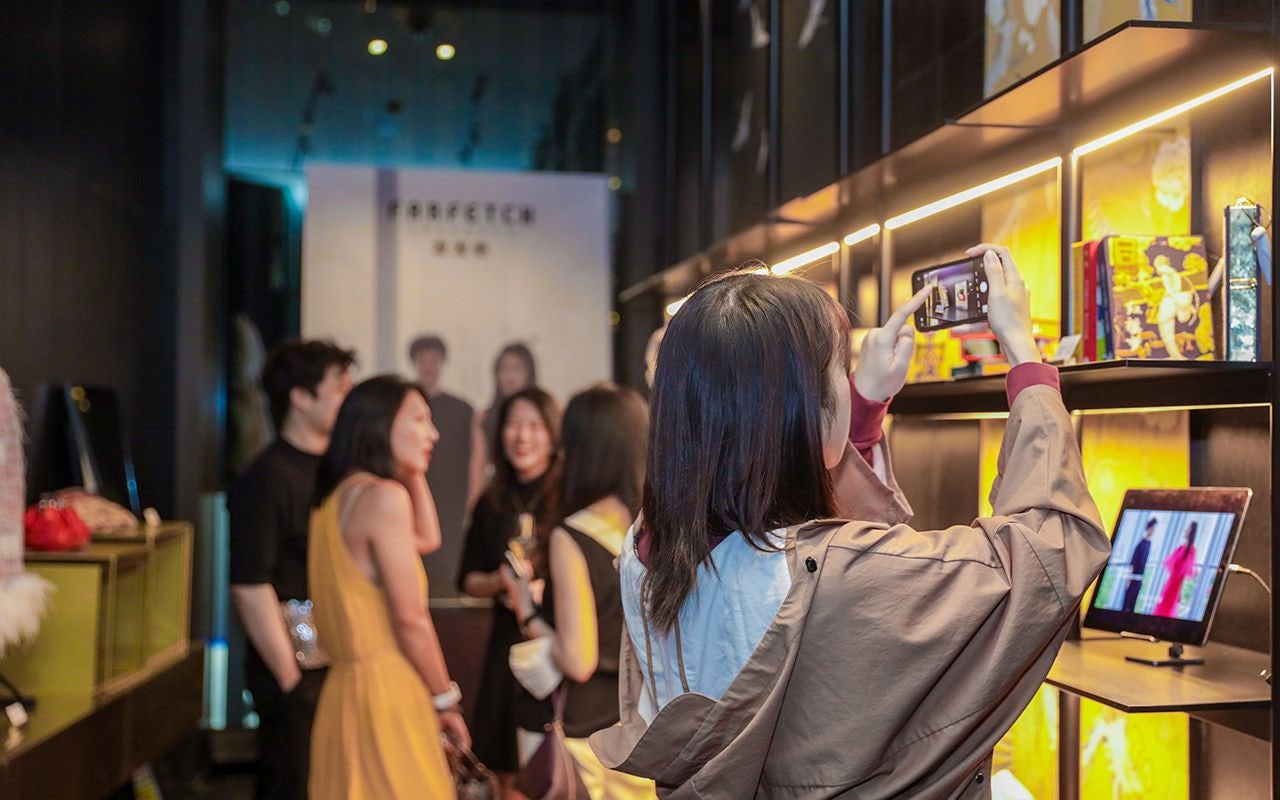What happened
On the heels of its landmark deal with Alibaba and Richemont last November, Farfetch is finally breaking ground in China. On March 1, the fashion e-tailer officially launched its store on Tmall, offering local consumers 3,500 brands such as Loewe, Off-White, and Pomellato — 95 percent of which did not have their own set-up on the site before.
Farfetch’s new storefront is front and center on Tmall Luxury Pavilion’s homepage, boasting a premium permanent banner and one of five main navigation buttons. To entice shoppers, the British-Portuguese company is collaborating with Chinese influencers, running promotions its opening week, as well as providing the option of interest-free installments. And it’s working: these activations have already helped the marketplace draw 25,000 followers as it begins to refine its localization strategy.
Jing Take:#
After 12 years of operation, Farfetch reported last week that it hit profitability for the first time in 2020, thanks to its digital-first approach and budding China presence. The launch on Tmall is not only set to accelerate this growth, but also help the business test the market and position itself for deeper digital penetration. As CEO José Neves told Women’s Wear Daily about the e-commerce learning curve: “These platforms, they are a Google and an Instagram inside an Amazon. Just because you have a shop does not mean you maximize your traffic.” Credit Suisse analyst Stephen Ju forecasted that Farfetch’s active shoppers could hit 30 million in the next five years if it plays its China cards right.
For brands, the Farfetch-Alibaba deal means access to one of the world’s largest stores and its 779 million consumers — a drastic change for many that did not have an e-commerce presence in the country to begin with. (Because China has strict laws about how foreign businesses operate and sometimes requires them to partner with an existing Chinese business, the barrier to entry is often too high.) Now, however, even small brands get to swim with the big fishes and profit off China’s insatiable luxury appetite. Senreve, which already had a Tmall platform outside of Farfetch, has seen growth in China surge 10 times year-over-year with its online and offline operations.
As Farfetch starts to “test and fail and learn” in China, it remains to be seen how its Tmall store will differ from competitors like Net-a-Porter. Moreover, as other e-commerce players ramp up their digital strategies — Mytheresa, for one, recently saw its profits double from new users — the company has a long way to go to win over Chinese consumers. But having fan favorites like Alibaba and Richemont in its corner will certainly help.
The Jing Take reports on a piece of the leading news and presents our editorial team’s analysis of the key implications for the luxury industry. In the recurring column, we analyze everything from product drops and mergers to heated debate sprouting on Chinese social media.


